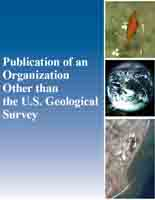Characterizing water-quality response after the 2020 Cameron Peak Fire using a novel application of the Weighted Regressions on Time, Discharge, and Season method
Links
- More information: Publisher Index Page (via DOI)
- Open Access Version: Publisher Index Page
- Download citation as: RIS | Dublin Core
Abstract
The frequency and severity of wildfire activity in the western United States emphasises the utility of hydrologic models to predict water-quality response. This study presents a novel application of the Weighted Regressions on Time, Discharge and Season (WRTDS) method to assess potential changes in water quality in two watersheds draining the North Fork Big Thompson River and Buckhorn Creek in Larimer County, Colorado that were affected by the 2020 Cameron Peak Fire. WRTDS models were developed using 12 years of pre-fire data and used to estimate the expected constituent concentrations for each sample collected in the post-fire record. The predicted constituent concentrations modelled in this manner are representative of conditions in the absence of fire and allow pre-fire and post-fire stream chemistry to be quantitatively compared. Nitrate and total phosphorus concentrations showed the greatest differences between the observed and predicted concentrations, which were up to 153% greater than expected. We linked changes in source inputs and elevation as likely controls on the difference in magnitude and timing of response between the two watersheds. Post-fire arsenic and manganese concentrations were greater than the predicted concentrations in both watersheds, with arsenic up to 42% greater and manganese up to 85% greater than the model predictions. Post-fire calcium, magnesium, chloride and sulphate concentrations were greater than model predictions at the North Fork and less than the predictions at Buckhorn. We argue that greater burn severity at Buckhorn likely reduced soil–water infiltration and led to bypassed subsurface flow paths through a major lithologic source of these constituents. Post-fire changes in total organic carbon and dissolved iron concentrations were weakly supported by the model results, as observed concentrations were largely within the bounds of expected values calculated from the pre-fire model. The novel approach to WRTDS presented in this study could be a useful tool for water-quality assessments after land disturbances in the western United States.
Study Area
| Publication type | Article |
|---|---|
| Publication Subtype | Journal Article |
| Title | Characterizing water-quality response after the 2020 Cameron Peak Fire using a novel application of the Weighted Regressions on Time, Discharge, and Season method |
| Series title | Hydrological Processes |
| DOI | 10.1002/hyp.70178 |
| Volume | 39 |
| Issue | 6 |
| Publication Date | June 16, 2025 |
| Year Published | 2025 |
| Language | English |
| Publisher | Wiley |
| Contributing office(s) | Colorado Water Science Center |
| Description | e70178, 21 p. |
| Country | United States |
| State | Colorado |
| County | Larimer County |
| Other Geospatial | Buckhorn Creek watershed, North Fork Big Thompson River watershed |


